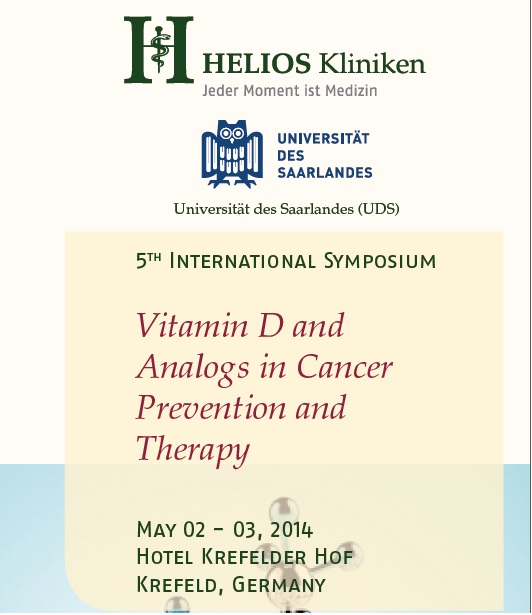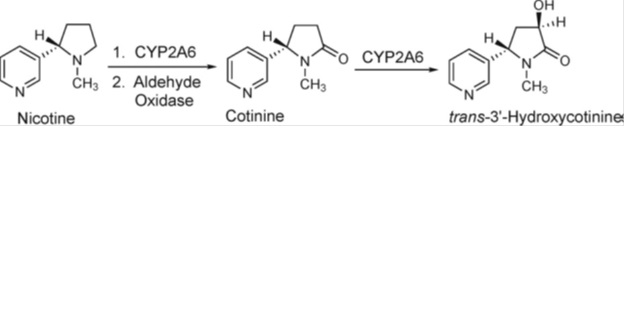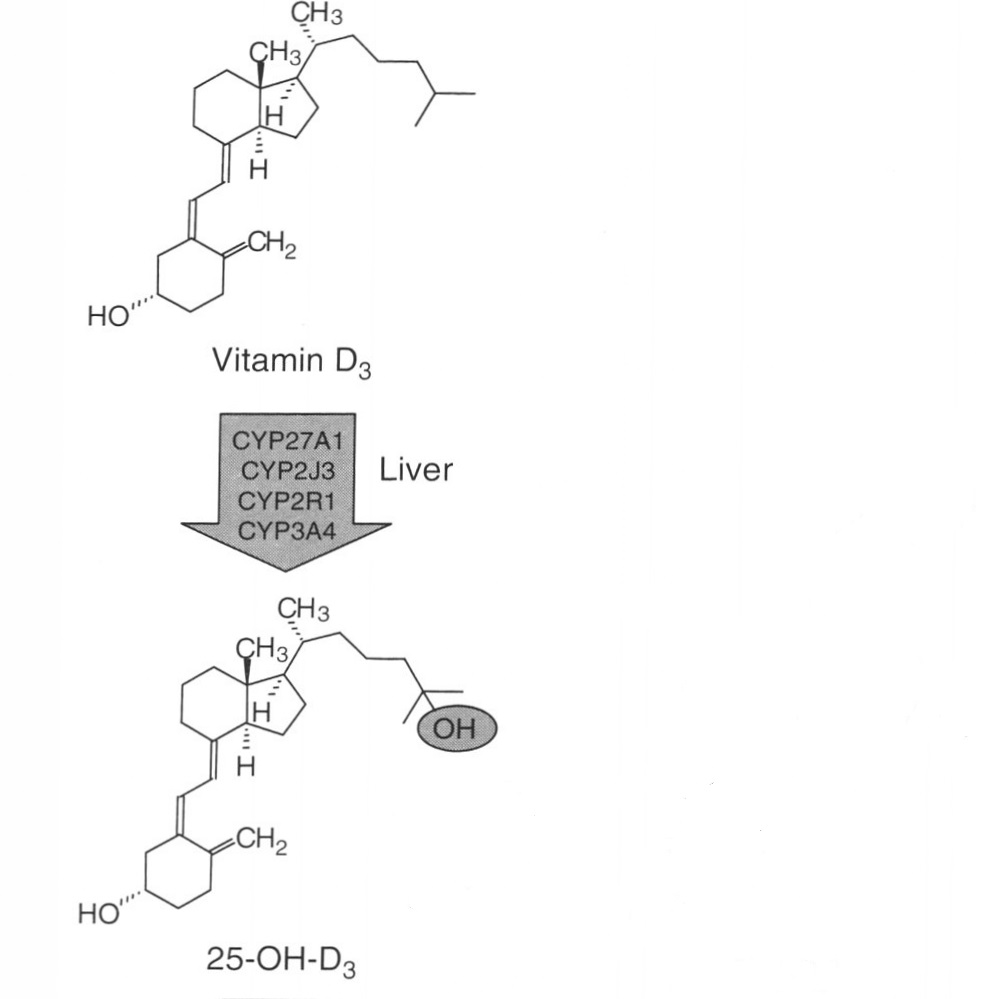About This Project
According to Lung Cancer Statistics from CDC, more people in the United States die from lung cancer than any other type of cancer. The link between vitamin D deficiency and increased mortality to cancer is well established. However, we do not know how smoking might affect vitamin D concentrations and lung cancer progression in patients. The goal of this research project is to study whether or not cotinine from cigarette affects vitamin D concentrations in women.
Ask the Scientists
Join The DiscussionWhat is the context of this research?
Last year we conducted an epidemiological research study using the data of over 23000 individuals from NHANES, a program of studies designed to assess the health and nutritional status of adults and children in the United States. We found a correlation between cigarette smoking and and vitamin D deficiency. This confirmed two previous studies. In 1999 Brot et al. found that smoking had a significant effect on calcium and vitamin D metabolism. In 2013 Afzal et al. discovered that concentrations of vitamin D were associated with higher risk of tobacco-related cancer.
Our lab is conducting a new study to test our hypothesis, "How cotinine affect the concentration of vitamin D in women."
What is the significance of this project?
"In the 20th century, the tobacco epidemic killed 100 million people worldwide. During the 21st century, it could kill one billion." World Health Organization (WHO) - 2008.
According to the Centers of Disease Control and Prevention (CDC), lung cancer has been the first leading cause of cancer death among women; First among white, black, Asian/Pacific Islander, and American Indian/Alaska Native women; Second among Hispanic women. Because the nicotine in tobacco is addictive, quitting smoking can be challenging.
Vitamin D deficiency is a global health problem. Researchers found that not only has the number of Americans with low vitamin D levels increased, but average vitamin D levels among adults have also decreased. Vitamin D deficiency is now recognized as an epidemic in the United States.
What are the goals of the project?
Nicotine in cigarettes is metabolized into cotinine in human body. Cotinine has a long half-life of almost 20-hours in the blood serum. To study how cotinine affects vitamin D concentration in patients we will be completing two studies.
We will be investigating the interaction between Cotinine and Vitamin D activation in human blood serum. This will be done by utilizing the Cotinine and vitamin D ELISA Kits to study the concentration-concentration effects between the two metabolites.
We will also be investigating the enzyme-product relationship of Cotinine CYP2A6 on Vitamin D activation, and vise versa, using the Vitamin D CYP27A1 activation enzyme on Cotinine.
These two studies will help us to better understand the relationship between Cotinine and Vitamin D.
Budget
The budget will be used to purchase the ELISA Kits from Sigma Aldrich and Biocompareto provide the research laboratory for the study to answer the two questions mentioned.
Endorsed by
Meet the Team
Team Bio
_
Kiano Manavi
Nutrition enthusiast with interest on Vitamin-D and human health.
Dr. Brenda Alston-Mills
Professor at North Carolina State University
Press and Media
 THE FIFTH INTERNATIONAL SYMPOSIUM ON VITAMIN D ANALOGS IN CANCER PREVENTION AND THERAPY
THE FIFTH INTERNATIONAL SYMPOSIUM ON VITAMIN D ANALOGS IN CANCER PREVENTION AND THERAPY
2-3 May, 2014,
Hotel Krefelder Hof, Krefeld, Germany
PO No 7, Abstract No 38
Effect of Cotinine Blood Serum Level on Vitamin-D Blood Serum Level Among Women Smokers in the United States
R Manavi Kiano, B. P. Alston-Mills (Raleigh, NC, USA)
Additional Information
Effect of Serum Cotinine on Vitamin D Serum Concentrations Among American Females with Different Ethnic Backgrounds Anticancer Res February 2015 35 (2) 1211-1218
=================================================
PROPOSAL:
Introduction:
Previous research findings demonstrated that race and gender have effects on vitamin D concentrations in serum. For the first time, results also illustrated that smoking habits among females may also play a role in the vitamin concentration in serum (Manavi et al 2015).
Nicotine, the alkaloid, is found in nature and acts as a botanical insecticide in tobacco leaves (Benowitz et al 2009). The alkaloid contributes to addiction among cigarette smokers. The serum concentration of nicotine rise quickly during a smoke inhalation event and peak at the completion of the event. Nicotine is metabolized in liver by Cytochrome P450 2A6 (CYP2A6) to cotinine. Approximately 70–80% of nicotine is converted to cotinine, which is its primary metabolite and the product of C-oxidation. Cotinine is an excellent biomarker for both active use of tobacco and for secondhand smoke exposure. Cotinine has been measured in a variety of biological fluids and tissues including plasma, serum, urine, hair and nails, with the longest half-life measured in serum (CDC). Cotinine is further metabolized to the Trans-3’-Hydroxycotinine (3HC). A complete nicotine pathway involves two steps. The first is mediated primarily by CYP2A6 to produce nicotine-Δ1′ (5′)-iminium ion, which is in equilibrium with 5′-hydroxynicotine. The second step is catalyzed by a cytoplasmic aldehyde oxidase. Nicotine iminium ion has received considerable interest since it is an alkylating agent and, as such, could play a role in the pharmacology of nicotine.

Figure-1: Metabolism of nicotine to cotinine and trans-3’-hydroxycotinine.
Vitamin D is well known for its involvement in mineral metabolism and bone growth. Calcium-Vitamin D relationship is well known for its hormonal properties that inhibit the proliferation of human cancer cells. The discovery of Vitamin D inhibitory effect on numerous diseases has raised interest in Vitamin D supplementation in cancer treatment and prevention. Observational and pre-clinical studies, both in vitro and in vivo have exhibited the vitamin D anti-proliferative properties of the vitamin in lung cancer. The incidence of the cancer in certain populations was correlated to serum Vitamin D concentrations.
In the liver, pre-hormone Vitamin D (cholecalciferol) is hydroxylated by liver enzyme 25-hydroxylase, CYP27A1, into the major circulating form of Vitamin D, 25(OH)D3.

Figure-2: Renal pathway of vitamin D activation.
Purpose:
- Investigation of interactions between Cotinine and Vitamin D activation in human blood serum.
- Question#1: Does an increase in serum Cotinine level have effect on serum Vitamin D concentration?
- Investigation of enzyme-product relationship of Cotinine CYP2A6, on 25-OH-D3 activation in human liver.
- Question#2: Does an increase in CYP2A6 function have effect on the active form of 25(OH)D3 in the liver?
Significance:
Despite the role that cigarette smoke plays in causing inflammation, lung diseases and cancers, Chronic Obstructive Pulmonary Disease (COPD) and other chronic illnesses, there is a paucity of research investigating the effect of cigarette smoke on Vitamin D status and the role of the vitamin in the respiratory system. In a study by Afzal et al.(2013), it was demonstrated that lower serum Vitamin D was associated with higher risk of tobacco-related cancers but not with risk of other cancers. In a different study by Brot et al. (1999), it was shown that smoking does have a significant effect on calcium and Vitamin D metabolism, which is not likely to be explained by other confounding lifestyle factors. Therefore, the purpose of this research is to initiate series of investigations on effects of cotinine on the major circulating form of Vitamin D, where pre-Vitamin D is converted to 25-OH-D3 as indicated above.
Material and Methods:
In order to test the sensitivity of Vitamin D detection and its products, we will use the following procedures:
- 25 (OH) D3 Total ELISA Kit- 96 Strip Wells:
- The 25-hydroxy (25-OH) Vitamin D ELISA is designed for the quantitation determination of total 25-OH Vitamin D in human serum and plasma.
- The 25(OH) Vitamin D ELISA kit is a solid phase enzyme-linked immunoassay (ELISA) based on the principal of competitive binding.
- Cotinine ELISA Kit – 96 Strip Wells:
- The Cotinine ELISA Kit is designed for the detection cotinine in serum and urine.
- The Cotinine ELISA kit is a solid phase competitive ELISA. The samples and cotinine enzyme conjugate are added to the wells coated with anti-cotinine antibody. Cotinine in the samples competes with a cotinine enzyme (HRP) conjugate for binding sites. Unbound cotinine and cotinine enzyme conjugate are washed off by washing step. Upon the addition of the substrate, the intensity of color is inversely proportional to the concentration of cotinine in the samples. A standard curve is prepared relating color intensity to the concentration of the cotinine.
- Human Cytochrome P450 2A6 (CYP2A6) ELISA Kit – 96 Strip Wells:
- This gene, CYP2A6, encodes a member of the cytochrome P450 superfamily of enzymes. The cytochrome P450 proteins are monooxygenases which catalyze many reactions involved in drug metabolism and synthesis of cholesterol, steroids and other lipids. This protein localizes to the endoplasmic reticulum and its expression is induced by phenobarbital. The enzyme is known to hydroxylate coumarin, and also metabolizes nicotine, aflatoxin B1, nitrosamines, and some pharmaceuticals.
- Human Cytochrome P450 27A1 (CYP27A1) ELISA Kit – 96 Strip Wells:
- CYP27 / CYP27A1 is a member of the cytochrome P450 superfamily of enzymes. The cytochrome P450 proteins are monooxygenases which catalyze many reactions involved in drug metabolism and synthesis of cholesterol, steroids and other lipids. This mitochondrial protein oxidizes cholesterol intermediates as part of the bile synthesis pathway.
References:
- Manavi, K. R., Alston-Mills, B. P., Thompson, M. M., & Allen, J. C. (2015). Effect of Serum Cotinine on Vitamin D Serum Concentrations among American Females with Different Ethnic Backgrounds. International Journal of Cancer Research and Treatment “Anticancer Research” , 35(2), 1211–1218.
- Shigenaga MK, Trevor AJ, Castagnoli N Jr. Metabolism-dependent covalent binding of (S)-[5–3H]
nicotine to liver and lung microsomal macromolecules. Drug Metab Dispos 1988;16(3):397–402.
[PubMed: 2900731]
- Benowitz, N. L., Hukkanen, J., & Jacob III, P. (2009). Nicotine chemistry, metabolism, kinetics and biomarkers. Handbook of Experimental Pharmacology, 192, 29-60. doi:10.1007/978-3-540-69248-5_2.
- Centers for Disease Control and Prevention . (2013, December 4). National Biomonitoring Program- “Cotinine”Biomonitoring Summary. Retrieved from http://www.cdc.gov/biomonitoring/Cotinine_Biomonit...
- Bao, Z., He, X.-, Ding, X., Prabhu, S., & Hong, J.- (2005). Metabolism of nicotine and cotinine by human cytochrome p450 2a13. DRUG METABOLISM AND DISPOSITION, 33(2), 258-261.
- Dusso, A. S., Brown, A. J., & Slatopolsky, E. (2005). Vitamin D. American Journal of Physiology - Renal Physiology, 289. doi:10.1152/ajprenal.00336.2004.
- Ramnath, N., Kim, S., & Christensen, P. J. (2011). Vitamin D and lung cancer. Expert Review of Respiratory Medicine, 5(3), 305-309.
- Prosser, D. E., & Jones, G. (2004). Enzymes involved in the activation and inactivation of vitamin D. Trends in Biochemical Sciences, 29(12), 664-673. doi:10.1016/j.tibs.2004.10.005
- Afzal, S., Bojesen, S. E., & Nordestgaard, B. G. (2013). Low Plasma 25-Hydroxyvitamin D and Risk of Tobacco-Related Cancer. Clinical Chemistry, 59(5), 771–780.
- Brot, C., Jorgensen, N. R., & Sorensen, O. H. (1999). The influence of smoking on vitamin D status and calcium metablism. European Journal of Clinical Nutrition, 53(12), 920–926.
- Figure-1: Jacob, P. I., Yu, L., Duan, M., Ramos, L., Yturralde, O., & Benowitz, N. L. (2011). Determination of the Nicotine Metabolites Cotinine and Trans-3′-Hydroxycotinine in Biologic fluids of Smokers and Non-Smokers using Liquid Chromatography - Tandem Mass Spectrometry: Biomarkers for Tobacco Smoke Exposure and for Phenotyping Cytochrome P450 2A6 Activity. Journal of Chromatography B, 879(3-4), 267–276.
- Figure-2: Prosser, D. E., & Jones, G. (2004). Enzymes involved in activation and inactivation of vitamin D. TRENDS in Biochemical Sciences, 29(12), 664–673.
Project Backers
- 3Backers
- 100%Funded
- $3,129Total Donations
- $1,043.00Average Donation


